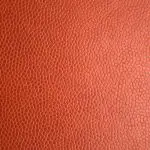Are you looking to give your leather bag a stylish and functional upgrade? In this article, we’ll show you how to line your leather bag with fabric, giving it a fresh new look.
You’ll learn how to:
- Choose the right fabric
- Prepare the bag
- Measure and cut the fabric
- Attach it securely
- Sew the lining
We’ll also guide you through adding pockets and compartments, as well as finishing touches.
Get ready to transform your leather bag into a customized masterpiece!
Table of Contents
Choosing the Right Fabric
You’ll want to make sure you choose the right fabric for lining your leather bag. When it comes to fabric types, there are a few options that work well for lining a leather bag.
One popular choice is cotton, which is lightweight and durable. Cotton also comes in a wide range of colors, so you can easily find a shade that complements your leather bag.
Another option is polyester, which is known for its strength and resistance to wrinkles. Polyester also offers a variety of color options, making it a versatile choice for lining your bag.
If you’re looking for something more luxurious, silk is a great choice. Silk adds a touch of elegance and sophistication to your leather bag, and it comes in a range of beautiful colors.
No matter which fabric type you choose, make sure to consider the color options available. Select a color that enhances the overall look of your leather bag and matches your personal style.
Preparing the Leather Bag
First, gather all the necessary materials and tools for preparing your leather bag for lining. You’ll need a soft cloth, leather cleaner, leather conditioner, and a small brush.
Start by cleaning the leather surface with the soft cloth and leather cleaner. This will remove any dirt or grime that may have accumulated over time. Gently scrub the leather in circular motions, paying extra attention to any stains or spots.
Once the leather is clean, it’s time to condition it. Apply a small amount of leather conditioner onto the cloth and rub it into the leather in a circular motion. This will help moisturize and soften the leather, preventing it from cracking or drying out. Make sure to cover the entire surface of the leather, including the edges and corners.
Allow the conditioner to absorb into the leather for a few minutes, then wipe off any excess with a clean cloth.
Your leather bag is now ready to be lined with fabric.
Measuring and Cutting the Fabric
Once you have gathered all the necessary materials, measure and cut the fabric for your lining. This step is crucial to ensure that your lining fits perfectly inside the leather bag. Here are some cutting techniques and fabric selection tips to help you with this process:
-
Measure twice, cut once: Take accurate measurements of the interior of your leather bag, allowing for seam allowances. Double-check your measurements to avoid any mistakes before cutting the fabric.
-
Choose the right fabric: Select a fabric that complements the style and durability of your leather bag. Consider the weight, color, and pattern of the fabric to create a cohesive look.
-
Use sharp fabric scissors: Invest in a good pair of fabric scissors to ensure clean and precise cuts. Dull scissors can lead to jagged edges and uneven lines.
-
Cut on a flat surface: Lay your fabric on a flat surface, such as a cutting mat or table, to achieve accurate cuts. Smooth out any wrinkles or folds before cutting to ensure a smooth and professional finish.
Attaching the Fabric to the Bag
After gathering all the necessary materials, start by attaching the cut fabric to the interior of your bag using a strong adhesive or stitching.
When it comes to attaching the fabric, you have a few techniques to choose from. One popular method is using a strong adhesive like fabric glue or heavy-duty double-sided tape. This is a quick and easy option, especially if you’re not confident in your stitching abilities. Simply apply the adhesive to the edges of the fabric and press it firmly onto the interior of your bag.
Alternatively, if you prefer a more secure and durable attachment, you can opt for stitching. Use a needle and thread that matches the fabric and bag color. Start by making small stitches along the edges of the fabric, ensuring it is securely attached. Repeat this process along all the edges until the fabric is completely attached. Remember to take your time and make neat, even stitches.
Now that you know the different attaching techniques, let’s move on to fabric selection.
Sewing the Lining
To sew the lining, you’ll need to choose a thread that matches the color of the lining material. This will ensure that the stitches blend in seamlessly and give your bag a professional finish. Once you have the right thread, follow these steps to sew the lining:
-
Start by pinning the lining fabric to the leather bag. Make sure the fabric is aligned properly and evenly distributed inside the bag.
-
Use a sewing machine or a needle and thread to stitch along the top edge of the lining, attaching it to the bag. Be careful not to sew through the leather, as this could damage the material.
-
Once the top edge is securely sewn, move on to the sides. Fold the excess lining fabric inward and pin it in place. Sew along the sides, making sure to catch both the lining and the bag fabric.
-
Finally, sew the bottom edge of the lining, following the same process as before. Trim any excess fabric and threads.
Adding Pockets and Compartments
When it comes to adding pockets and compartments to your leather bag, you have a variety of options for pocket placement.
You can choose to have exterior pockets for easy access or interior pockets for added security.
Additionally, considering the optimal compartment sizes is crucial to ensure that your bag remains organized and functional.
Pocket Placement Options
Consider where you want to place the pockets in your leather bag and how you plan to use them. This decision will greatly impact the functionality and interior design of your bag.
To help you make the best choice, here are some pocket placement options to consider:
-
Front and back exterior pockets: These pockets are perfect for easy access to items like your phone, keys, or a small notebook. They add an element of convenience while maintaining a sleek exterior design.
-
Interior zippered pockets: Ideal for keeping important items secure, such as your wallet or passport. These pockets are great for organizing essentials that you want to keep separate from the rest of your belongings.
-
Side pockets: These pockets are versatile and can be used to hold a water bottle, an umbrella, or any item that you want to keep within easy reach.
-
Interior slip pockets: Perfect for storing smaller items like pens, lip balm, or sunglasses. These pockets help keep your bag tidy and prevent smaller items from getting lost.
Optimal Compartment Sizes
The optimal compartment sizes will greatly impact the functionality and organization of your leather bag. When it comes to maximizing space and organizing essentials, it’s important to consider the size of each compartment carefully.
Too small, and you may struggle to fit all of your belongings. Too large, and your items may shift around and become disorganized. Aim for compartments that are just the right size to hold your essentials snugly.
Consider the items you plan to carry and how they can be grouped together. For example, have a smaller compartment for your phone, wallet, and keys, and a larger compartment for your notebook or tablet.
Finishing Touches
To add some final touches to your lined leather bag, you can use fabric glue to secure the edges neatly. This will not only give your bag a polished look but also ensure that the lining stays in place. Here are some steps to help you achieve that:
-
Adding decorative elements: If you want to enhance the appearance of your bag, consider adding decorative elements such as beads, buttons, or embroidery. Fabric glue can be used to attach these elements securely to the lining or the leather itself.
-
Selecting the right thread: When sewing the lining to the leather, it is essential to choose the right thread. Opt for a sturdy thread that matches the color of your fabric to ensure a seamless and professional finish.
-
Applying fabric glue: Before securing the edges with fabric glue, make sure to clean the leather and lining thoroughly. Apply a thin line of fabric glue along the edge of the lining and press it firmly against the leather. Be careful not to use too much glue as it may seep through the fabric.
-
Allowing it to dry: Once you have glued all the edges, allow the bag to dry completely. This may take a few hours or overnight, depending on the type of fabric glue you are using. Avoid handling or using the bag until the glue is fully dried.
Care and Maintenance
Make sure you regularly clean and condition your lined leather bag to keep it looking its best. Cleaning techniques and preserving leather bags are essential to maintaining their quality and longevity.
To start, remove any dirt or debris from the bag’s surface by gently wiping it with a soft cloth or a slightly damp sponge. Avoid using harsh chemicals or abrasive materials that could damage the leather.
Next, apply a leather cleaner or mild soap to a clean cloth and gently wipe the bag’s exterior, paying special attention to any stains or marks. Be sure to follow the manufacturer’s instructions for the specific cleaner you are using. After cleaning, wipe away any excess cleaner with a separate clean cloth.
Once the bag is clean, it’s important to condition the leather to keep it soft and supple. Apply a small amount of leather conditioner to a clean cloth and rub it into the bag’s surface using gentle, circular motions. This will help to restore moisture and prevent the leather from drying out or cracking.
Conclusion
In conclusion, lining a leather bag with fabric is a great way to add durability and functionality to your accessory. By choosing the right fabric and properly preparing the bag, you can easily create a customized lining that fits your needs.
Sewing the lining and adding pockets and compartments will further enhance the bag’s practicality. Just remember to finish with some final touches and regularly care for your bag to maintain its quality.
With these simple steps, you’ll have a stylish and functional leather bag with a fabric lining in no time.





